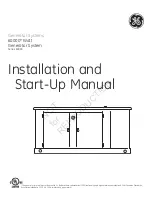
17
SC-TDC-1000 S Series Manual
SC-TDC-1000 S Series Manual | Surface Concept GmbH
Example 1
ReferenceChannel0 = -1
ReferenceChannel1 = 0
ReferenceChannel2 = 0
…..
ReferenceChannel# = 0
# represents the maximum available channel number.
With this definition all applied stop signals are measured in reference to the signal applied to channel 1 (0
in the software channel counting), while the signals of channel 1 themselves are not measured.
Example 2
ReferenceChannel0 = -1
ReferenceChannel1 = 0
ReferenceChannel2 = 2
ReferenceChannel3 = 2
With this definition the stop signal on channel 2 is measured in reference to the signal applied to channel
1 while the stop signal on channel 4 is measures in reference to the signal applied to channel 3. Also the
signals of channel 1 themselves are not measured, but the signals of channel 3 are measured in reference
to themselves. With such definition the results from channel 3 provide the time between two subsequent
signals on channel 3 (in case that this signal is a periodic signal, the time result represents exactly that
period).
It can happen that the use of more than one stop channel can lead to a wrong sorting of events within
the data stream in respect to their time while using the extended measurement range functionality. This
behaviour can be corrected by a sorting algorithm that resorts neighbouring signals within a certain
“depth”. This depth can be adjusted in the tdc_gpx3.ini file.
The corresponding entry in the tdc_gpx3.ini file is:
ChronoDepth = X
X is an integer value and must be set between 0 and 8.
The default setting is 0
X = 0 switches off the sorting algorithm.
The sorting algorithm works better at higher selected values, but higher values significantly increase the
load on the PC CPU.












































